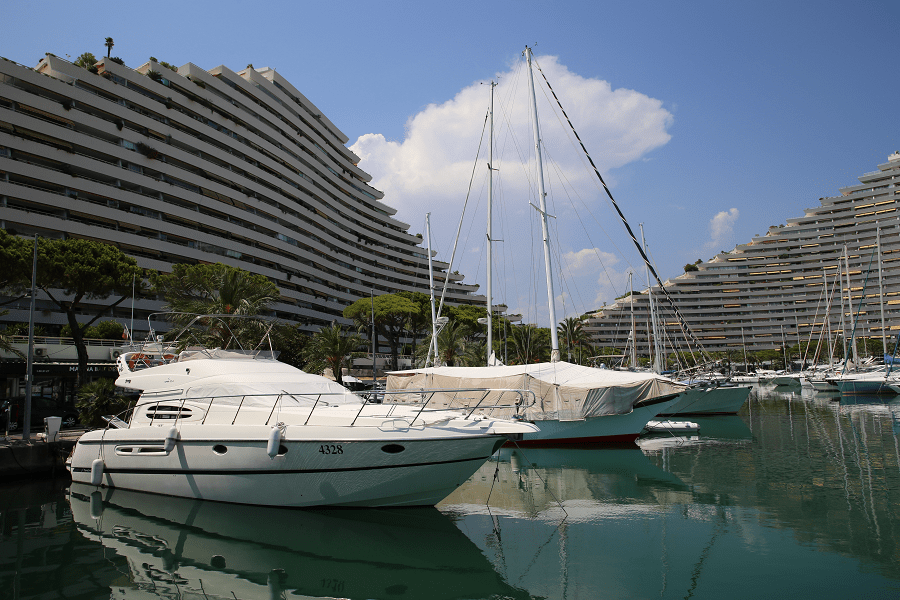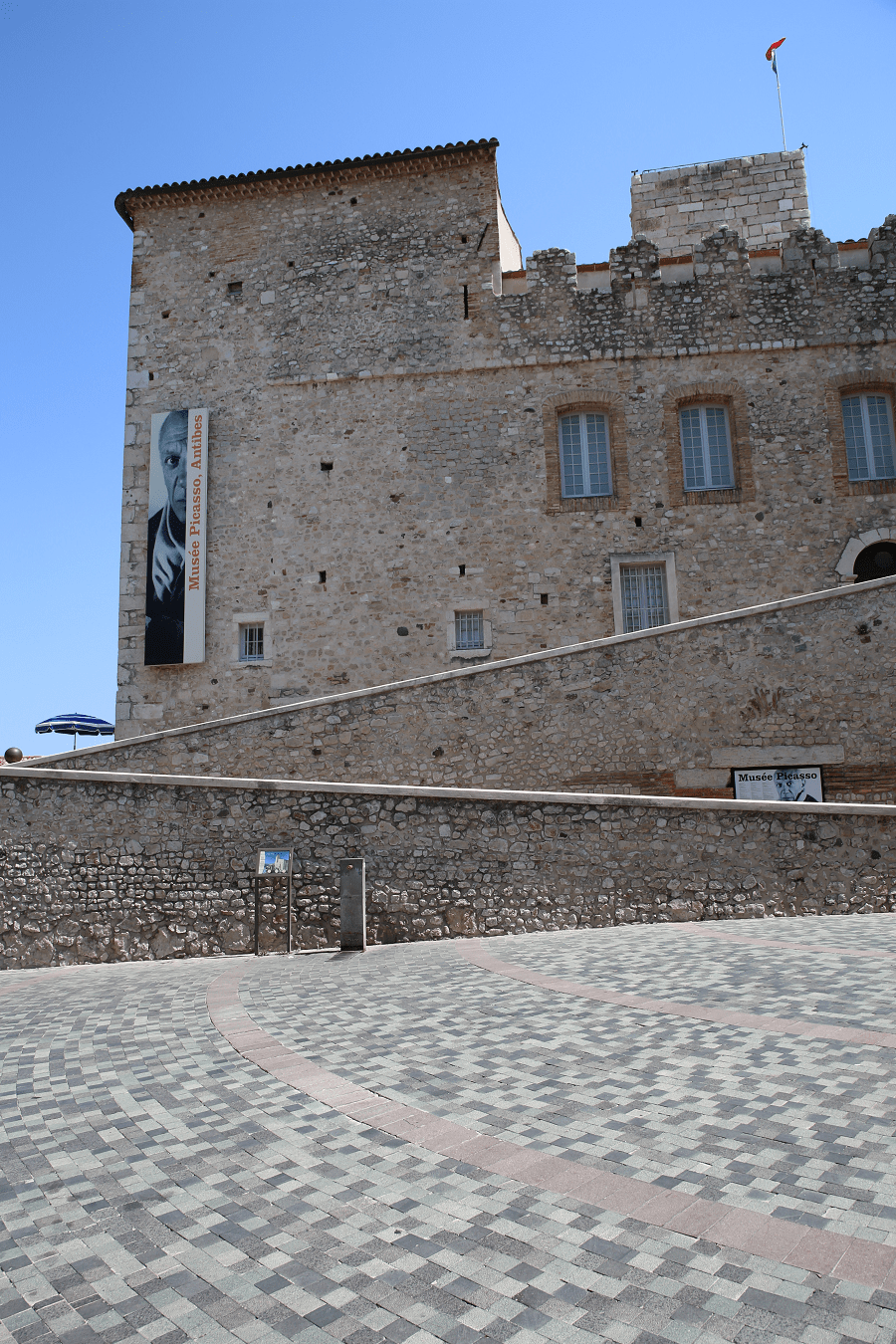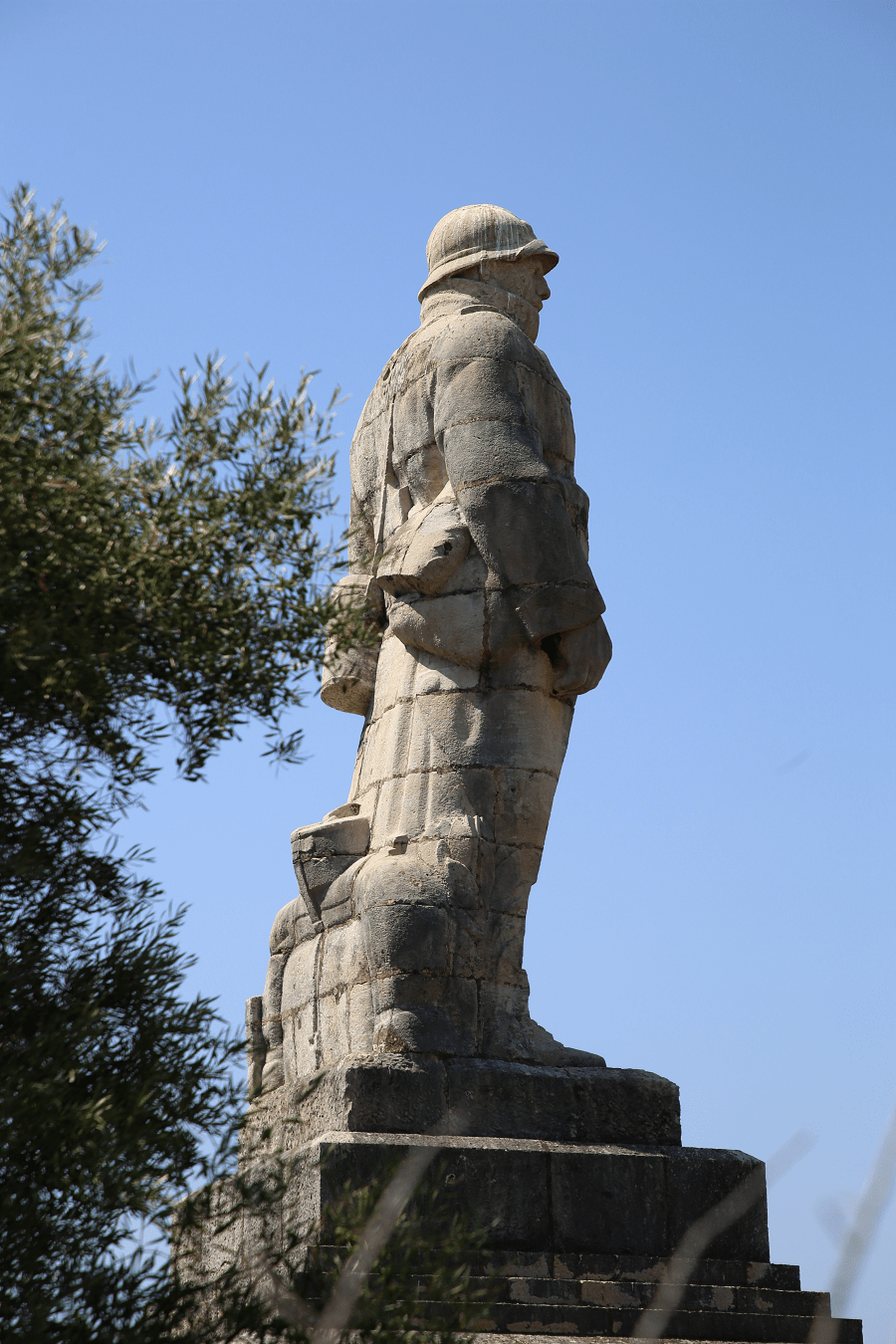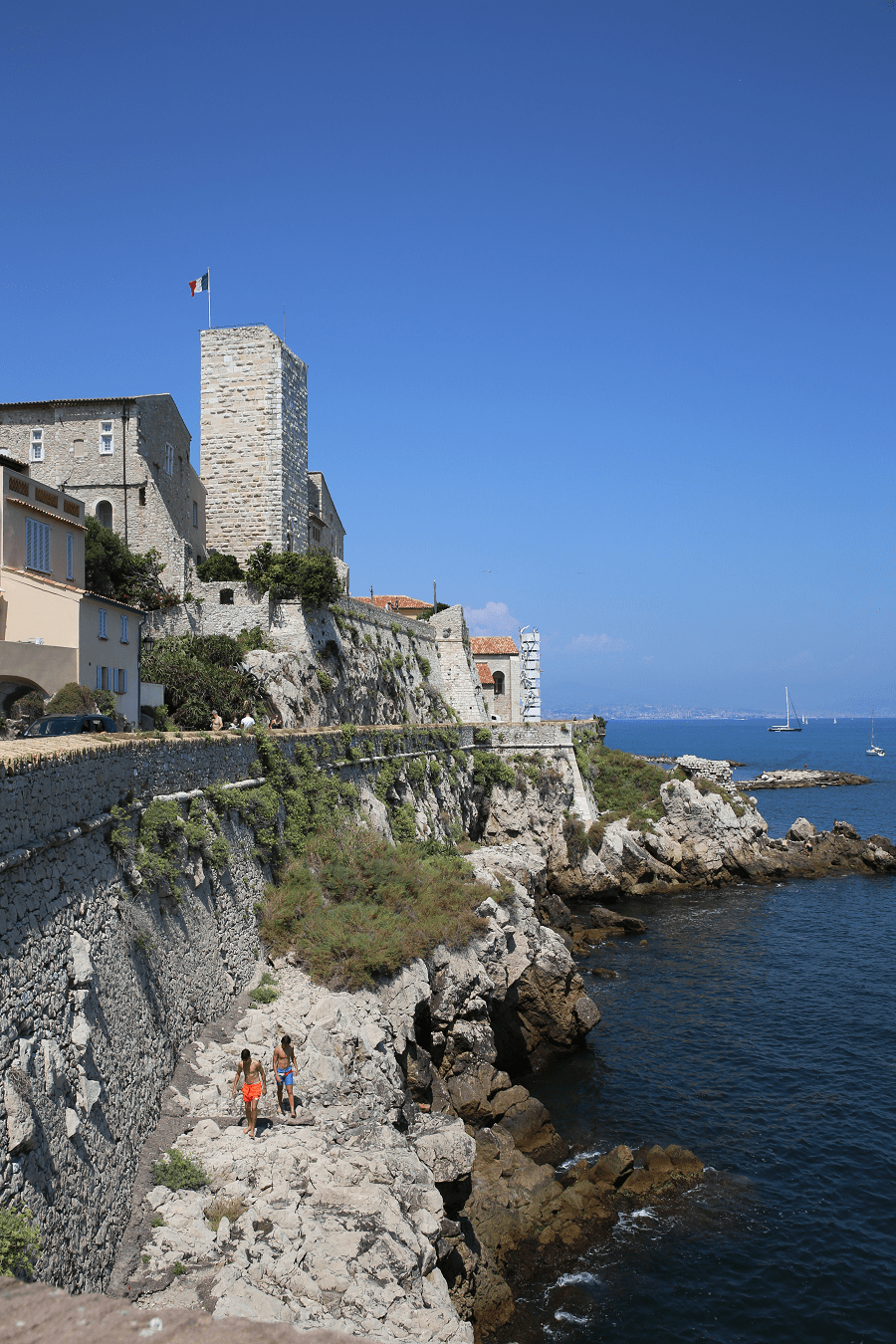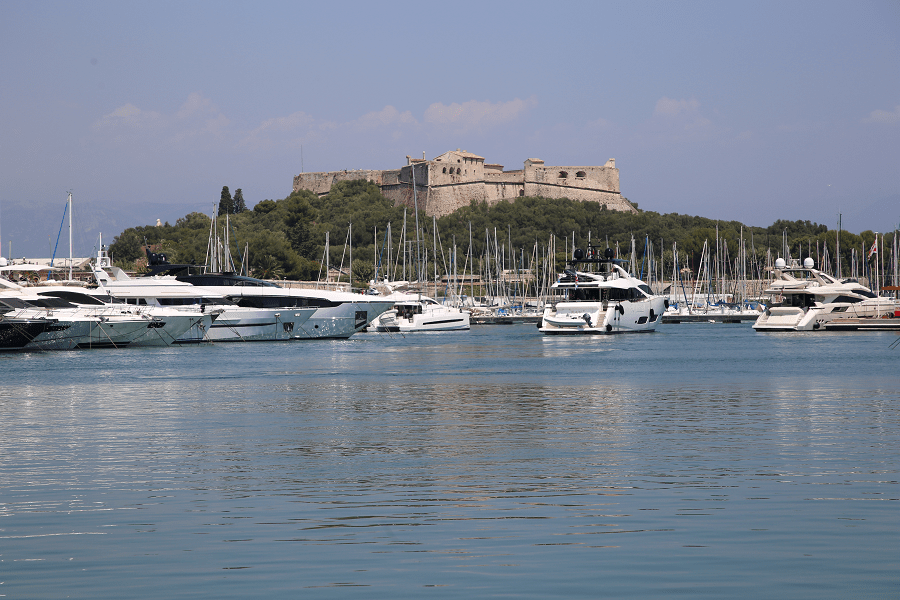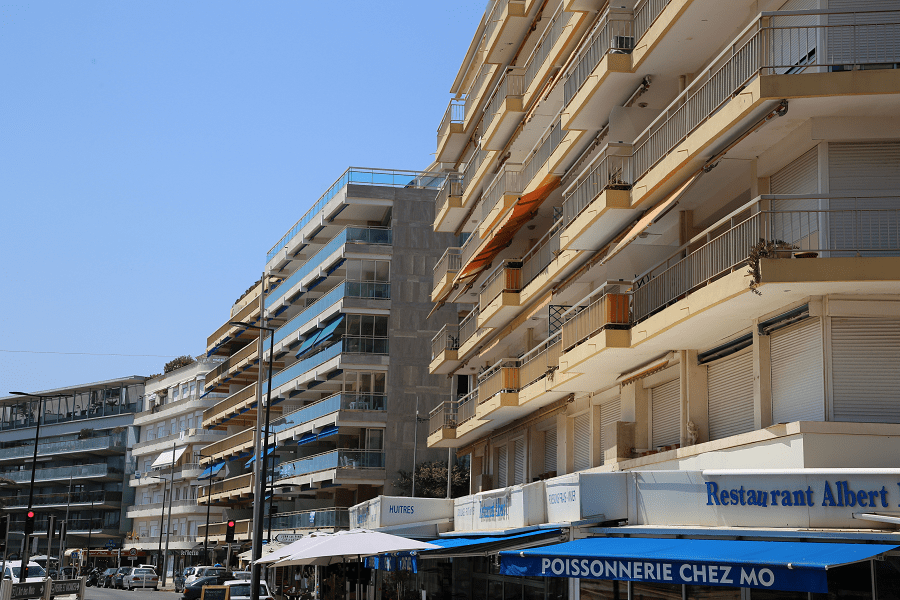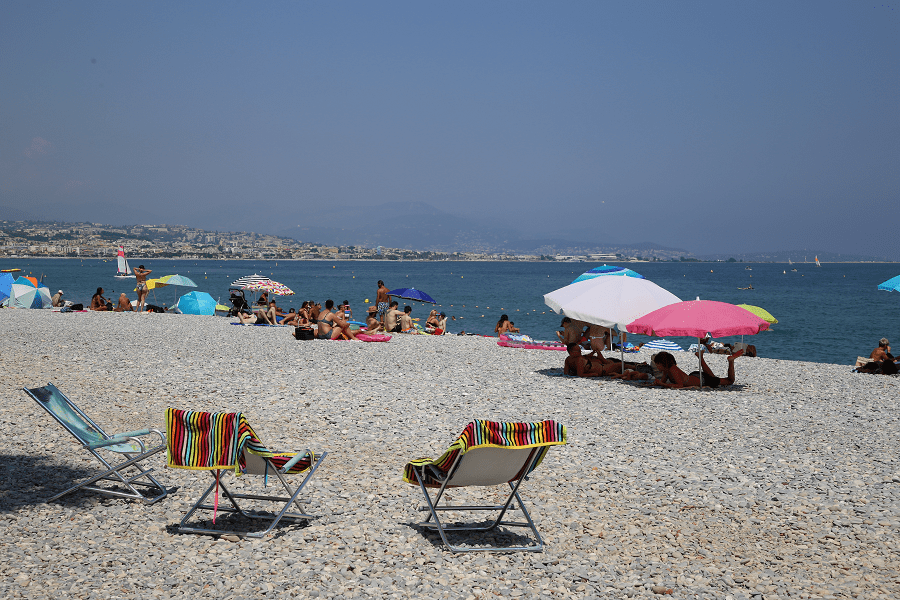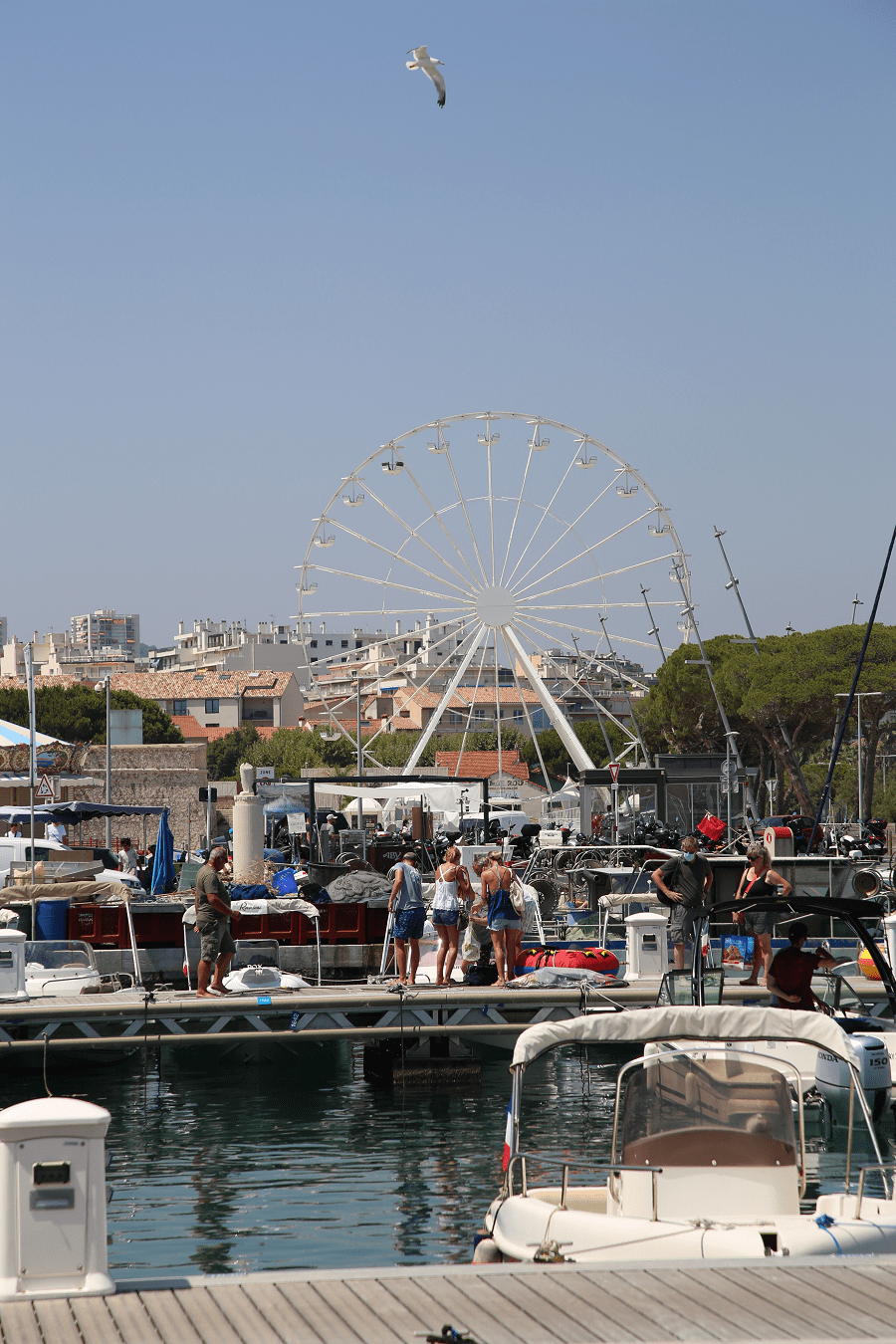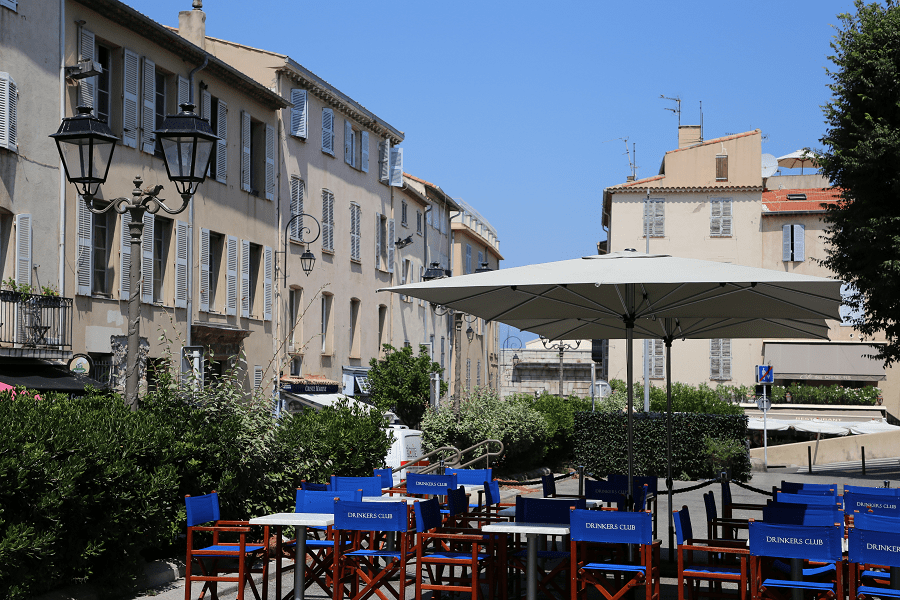Antibes (fr. Antibes) is a coastal city in the Alpes-Maritimes department of southeastern France, on the Côte d’Azur between Cannes and Nice. Part of French Riviera.
Antibes gave its ancient name, Antipolis, to an important business area, Sophia Antipolis, located in its surroundings (mainly in the town of Valbonne), where research and development companies in the field of new technologies are grouped together. Since the adoption of the Alur law by decree (no 2013-392 of 10 May 2013), the commune of Antibes is one of the 60 communes of the Alpes-Maritimes categorized as a tense zone.
Tourism and main attractions
Sites and monuments
- Cap d’Antibes
- The Tire-Poil trail, a former customs path
- The Provencal market
- Marineland d’Antibes, created in 1970 by Count Roland de La Poype
- The Picasso museum
- The Archeology Museum (with the Terpon Pebble)
- Sea and Coastal Area of the Graillon Battery
- The Tour museum which traces the history of Antibes in the twentieth century
- The Garoupe lighthouse
- Fort Carré and the Vauban ramparts of old Antibes
- Port Vauban, one of the largest marinas in Europe
Hotel du Cap-Eden-Roc
The internationally renowned Peynet and humorous drawing museum about the illustrator and creator of “lovers”, known as Peynet
The Postcard Museum
The Château Salé where Bonaparte and his family stayed. It is located at the end of a dead end behind the Church of the Assumption, avenue Philippe-Rochat
The association house, built on the old Sainte-Claire chapel
The theater, built on the old Chapel of Mercy
Grand hotel, place du Général De Gaulle
The old herbalist’s shop, Place Nationale
Door of the Antiboulenc library
The wash house, rue du lavoir
Memorial on the mobile gendarmerie barracks, 24/6 squadron, rue Général Vaudenberg
Column of the Place Nationale
Door of the old masonic lodges
House where the plaque indicating the place of imprisonment of Napoleon I’s guard was placed by mistake, because the latter was in fact locked up in the Masonic lodges
Gravette beach, between the old town and the Vauban port
The sandy beaches of Juan-les-Pins
Civil heritage
Fort Carré was built in the mid-sixteenth century under Henri II by Jean Renaud de Saint Rémy and retouched at the end of the seventeenth century under Louis XIV by Vauban. Property of the City of Antibes since 1997, it has been open to the public since 1998. Classified as historical monuments by successive decrees of 7 November 1906 and 20 August 1913, modified by decrees of 17 October 1937 and 19 October 1976.
Fountain and Roman column, rue Georges-Clemenceau (in the middle of the café terrace) Inscribed on the Supplementary Inventory of Historical Monuments by decree of 31 March 1928.
Grimaldi Castle, housing the current Picasso Museum. Fifteenth and sixteenth centuries. Classified as historical monuments by decree of 29 April 1928.
Remains of the Clausonnes aqueduct, in private property, at a place called “Vallon du Fugueiret”, straddling the town of Valbonne. Listed on the Supplementary Inventory of Historical Monuments by decree of 25 July 1936.
Remains of the Roman aqueduct of Font Vieille whose origin is in the valley of Brague, towards Biot. Some parts were reused after a refurbishment at the end of the eighteenth century.
Roman cistern with a capacity of 60 m3 collecting rainwater, located in Montée Dor de la Souchère, found in 2009.
Undated remains of a Greco-Roman wall in private property. Listed on the Supplementary Inventory of Historical Monuments by decree of 16 February 1939.
Bastide du Roy and its gardens, owned by a private company, avenue Jules-Grec. Partially protected eighteenth century building. Registered on the Supplementary Inventory of Historical Monuments by decree of 6 June 1988. Gardens created in 1927. Classified on the Supplementary Inventory of Historic Monuments by Decree of 8 February 1990 (Cad AE 84).
Lighthouse of Garoupe, at the top of the peninsula of Cap d’Antibes. Built on the site of an old lighthouse from 1837 destroyed in 1944 by the Germans. Listed by historical monuments, without being protected. Magnificent 360 ° panorama.
Château Salé, hidden at the end of a dead end behind the Church of the Assumption and the city of Laval on avenue Philippe Rochat. Bonaparte stayed there in 1794 when he commanded the Army of Italy and the painter Joseph Vernet produced his work Port d’Antibes, visible at the National Maritime Museum in Paris and a copy offered to Marineland, of this strategic place before the urbanization of this area of the Côte d’Azur.
Fountain erected in recognition of Colonel Louis d’Aguillon, engineer of the kings, having undertaken the restoration of the ancient Roman aqueduct, again bringing drinking water in abundance to Antibes in 1785
Parks
The Villa Thuret, public property, whose botanical park is labelled a remarkable garden, open to the public. Managed by the National Institute of Agronomic Research (INRA), this 4-ha botanical garden presents a remarkable collection of exotic plants and trees, in particular 9 coconut palms from Chile. Various species of palms, mimosas, eucalyptus, cypresses are well represented among 3,000 outdoor species. Villa Thuret houses the botanical service and several scientific research laboratories. The garden obtained the Remarkable Garden label from the Ministry of Culture in 2007.
The Château de la Croë, private property, park planted with Mediterranean species, closed to the public; The domain of La Garoupe and the villa du Clocher, private domain; The Villa du Clocher was owned by Francis Bouygues, closed to the public.
The Villa Sous Le Vent, a private property bordering the Bay of Billionaires, built by the architect Barry Dierks, a remarkable Mediterranean botanical park. General de Gaulle occupied this property, which was closed to the public, for a time.
Villa Eilenroc, public property, exotic botanical park, open to the public under certain conditions.
The Domaine des Cocotiers, an acclimatization park where Jacques Duval d’Eprémesnil (1827-1891) develops many tropical plants. This area was subdivided from 1936. It is the current location of the Château de l’Aube.
Religious buildings
Church of the Immaculate Conception, which was a cathedral in the Middle Ages, currently the Notre-Dame-de-la-Platea Cathedral in Antibes, rue Christian-Chessel.
Church of Notre-Dame de la Garoupe, fourteenth century. Listed on the Supplementary Inventory of Historical Monuments by decree of 29 October 1926, famous for its many ex-votos, rue du Phare.
Parish church: Saint-Esprit chapel and Grimaldi tower. Built in the twelfth century, on the site of an early Christian church, then altered in the seventeenth century. Partially classified as historical monuments by decree of 16 October 1945, rue Saint-Esprit.
Saint-Jean chapel, seventeenth century. At that time, property of the brotherhood of Saint Jean-Baptiste and Notre-Dame-de-la-Garde. Located at the crossroads of the Route de Saint-Jean and the Chemin de Saint-Maymes. Listed on the Supplementary Inventory of Historical Monuments by decree of 14 December 1989.
Chapelle Saint-Bernardin, 14 rue Rostan. Partly from the sixteenth century. Listed on the Supplementary Inventory of Historic Monuments by decree of 13 March 1995. Chapel of the White Penitents. Remarkably restored. (Mass on Friday, visit on Saturday).
Church of the Assumption, built in 1959, avenue Philippe Rochat
Sainte-Thèrese church, built in 1932, route de Grasse
Jeanne d’Arc Church, started in 1943 and completed in 1983 for lack of materials during the war, in Juan-les-Pins, avenue de Cannes
Notre-Dame de la Pinède Church, built in 1899 and enlarged several times, in Juan-les-Pins, rue Saramartel
Saint-Joseph d’Azurville Church, built in 1923, place Jean Aude
Modern Church of the Sacred Heart, built in 1969, replaces the prefabricated Notre-Dame-de-la-Route church from 1958, rue du Docteur Chaudon
Modern Church of Sainte-Marguerite, built in 1985, in Semboules, boulevard Guillaume Apollinaire
Saint-Benoît Church, built in 1926, in Cap d’Antibes, boulevard Francis Meilland
Rural Saint-Claude chapel, Romanesque style, Chemin Saint-Claude
Chapel of Mont-Calvaire, built in 1652 for the Bernardines sisters, in Cap d’Antibes, route de Phare
Notre-Dame-de-Lumière chapel, at the Fontonne hospital, chemin des Quatre Chemins
Saint-Laurent chapel at Fort Carré, 16th century, Fort Carré trail
Notre Dame de Bonté chapel, 27 chemin Peyregoue
Chapel of the former Saint-Jacques hospices, built in 1843, bell tower 1851, formerly managed by the nuns of the Holy Trinity. Currently Fersen College, rue Arazy
Saint-Roch Orthodox chapel, avenue du Onze Novembre
Castral chapel of the Caroline castle domain of Tanagra, avenue du châtaignier
Temple of the Reformed Church, built in 1908, rue Niquet
Former temple in Cap d’Antibes, avenue Messieurs Beaumont
Evangelical church, avenue du châtaignier
Synagogue, built in 1990, in Juan-les-Pins, chemin des sables.
Beaches
There are 48 beaches along the 25 km of coastline that surround Antibes and Juan les Pins. Main beaches are: Plage de la Gallice, Plage de la Garoupe, Plage de la Salis, Plage du Crouton.
Shopping
Shopping in Antibes is not a priority on the tourist program.
Cuisine and restaurants
The national cuisine of Antibes has formed under the influence of Spanish, Italian, and Mauritian gastronomic traditions. As this city is found at the seaside, fish and seafood have been the basis of the national cuisine for centuries. In restaurants of Antibes, visitors will find many variants of fish soups, as well as rare and unusual seafood. Besides fruits of the sea, local cuisine offers a variety of vegetable dishes. Here it is important to mention that almost all food in the region is cooked with high-quality olive oil.
Seven best restaurants according to Michelin:
Louroc, boulevard JF-Kennedy, Antibes, 133 – 280 EUR • Modern Cuisine
Le 44, 44 boulevard Albert-1er, Antibes, 46 – 105 EUR • Modern Cuisine
Le P’tit Cageot, 5 rue du Docteur-Rostan, Antibes, 35 – 48 EUR • Modern Cuisine
Le Vauban, 7 bis rue Thuret, Antibes, 25 – 48 EUR • Modern Cuisine
Chez Jules Le Don Juan, 17 rue Thuret, Antibes, 39 – 65 EUR • Seafood, Provençal cuisine
L’Arazur, 6 rue des Palmiers, Antibes, 34 – 60 EUR • Modern Cuisine, Mediterranean Cuisine
Le Figuier de St-Esprit, 14 rue St-Esprit, Antibes, 42 – 200 EUR • Provençal cuisine
Transport and how to get to?
Roads:
- the motorway (A8), serving the north of Antibes Sophia Antipolis and Biot via exit 44
- the D6007 (former national 7) crossing Antibes from east to west, passing near the center
- the D35 (or route de Grasse) linking the center to the northern district
- the D6035, built in 2007, linking the north of Antibes to Antibes-les-Pins
Shortest distance by car:
From Menton (tolls): 1 h (53.6 km) via A8
From Monaco (tolls): 53 min (45.0 km) via A8
From Beaulieu-sur-Mer (tolls): 55 min (32.3 km) via Voie Pierre Mathis/Voie Rapide
From Villefranche-sur-Mer (tolls): 54 min (30.1 km) via Voie Pierre Mathis/Voie Rapide
From Nice (tolls): 36 min (23.2 km) via A8
From Cagnes-sur-Mer: 24 min (11.3 km) via D6007
From Cannes: 29 min (11.9 km) via Avenue des Frères Roustan
From Mandelieu-La Napoule: 29 min (22.9 km) via A8
From Fréjus (tolls): 51 min (50.7 km) via A8
From Saint-Raphaël (tolls): 57 min (52.4 km) via A8
From Sainte-Maxime (tolls): 1 h 12 min (83.9 km) via A8
From Saint-Tropez (tolls): 1 h 35 min (97.8 km) via A8
From Cavalaire-sur-Mer (tolls): 1 h 43 min (104 km) via A8
From Toulon (tolls): 1 h 35 min (135 km) via A57 and A8
From Aix-en-Provence (tolls): 1 h 53 min (161 km) via A8
From Nîmes (tolls): 2 h 54 min (266 km) via A8
From Marseille (tolls): 2 h 6 min (185 km) via A8
From Avignon (tolls): 2 h 33 min (246 km) via A8
From Montpellier (tolls): 3 h 19 min (312 km) via A8
From Sète (tolls): 3 h 28 min (341 km) via A8
From Agde (tolls): 3 h 43 min (365 km) via A9 and A8
From Pézenas (tolls): 3 h 45 min (367 km) via A9 and A8
From Béziers (tolls): 3 h 51 min (377 km) via A9 and A8
From Perpignan (tolls): 4 h 29 min (461 km) via A9 and A8
From Argelès-sur-Mer (tolls): 4 h 47 min (488 km) via A9 and A8
From Collioure (tolls): 4 h 53 min (495 km) via A9 and A8
From Narbonne (tolls): 3 h 59 min (400 km) via A9 and A8
From La Baule-Escoublac (tolls): 11 h 2 min (1,208 km) via A62
From Saint-Nazaire (tolls): 10 h 58 min (1,193 km) via A62
From Saumur (tolls): 9 h 12 min (1,000 km) via A7
From Nantes (tolls): 10 h 10 min (1,129 km) via A62
From Les Sables-d’Olonne (tolls): 10 h 15 min (1,118 km) via A62
From Cognac (tolls): 8 h 40 min (904 km) via A62
From Angoulême (tolls): 8 h 36 min (903 km) via A62
From Eauze (tolls): 6 h 59 min (676 km) via A8
From La Rochelle (tolls): 9 h 2 min (966 km) via A62
From Rochefort (tolls): 8 h 43 min (938 km) via A62
From Saintes (tolls): 8 h 26 min (902 km) via A62
From Arcachon (tolls): 7 h 59 min (841 km) via A62
From Royan (tolls): 8 h 48 min (906 km) via A62
From Biarritz (tolls): 8 h 2 min (849 km) via A64
From Saint-Jean-de-Luz (tolls): 8 h 6 min (854 km) via A64
From Bayonne (tolls): 7 h 52 min (836 km) via A64
From Dax (tolls): 7 h 52 min (815 km) via A64
From Lourdes (tolls): 6 h 55 min (715 km) via A8
From Pau (tolls): 7 h 7 min (732 km) via A8
From Périgueux (tolls): 7 h 52 min (822 km) via A8
From Bordeaux (tolls): 7 h 32 min (789 km) via A62
From Toulouse (tolls): 5 h 23 min (547 km) via A9 and A8
From Carcassonne (tolls): 4 h 31 min (456 km) via A9 and A8
From Andorra (tolls): 7 h 14 min (637 km) via A8
Airports: the nearest airport is Nice Côte d’Azur Airport and Cannes Airport.
Railways: Antibes central railway station offers connections to Nice, Cannes, Marseille, Grasse, St Raphael, Les Arcs, Milan, Ventimiliga, Paris and several other destinations.
Main information
Area: 26.5 sq. km
Population: 73 000
Languages: French
Currency: euro
Visa: Schengen
Time: Central European UTC +1
Coordinates: 43°34′51″N 7°07′26″
See here best sea and ocean resorts of France and Spain (223 objects)



